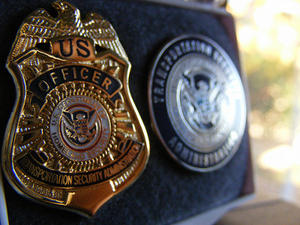Aviation securityDHS report: gap in TSA badging process poses threats
A new government report revealed that the Transportation Security Administration (TSA) is unable to accurately account for its employees who have access to secure areas in airports, resulting in a significant security gap

TSA is not certain of who has been issued badges // Source: thedailycommon.com
A new government report revealed that the Transportation Security Administration (TSA) is unable to accurately account for its employees who have access to secure areas in airports, resulting in a significant security gap.
The report, by the DHS Inspector General, found that 10 percent of the 900,000 TSA employees with security badges have records filled with omissions and inaccuracies that include incorrect birth dates and birth places as well as incomplete security threat assessments. “The safety of airport workers, passengers, and aircraft is at risk due to the vulnerabilities in the airport operator badging process,” the report said. “Individuals who pose a threat may obtain airport badges and gain access to secured airport areas.”
For instance the Inspector General found that one individual had three active badges at three different airports each with a different birth place listed. Meanwhile in 2007, U.S. Immigration and Customs Enforcement investigated one major airport and arrested twenty-three employees who had unauthorized airport access. Their search also found more than 100 temporary employees who had fraudulently obtained airport security badges.
The TSA’s Transportation Threat Assessment and Credentialing Vetting Operations is responsible for vetting individuals with badges that allow them to be in secure areas without an escort. Each year the department conducts a security threat assessment for roughly 550,000 people. Due to the high volume, TSA relies on airports to handle most of the badging process including collecting, verifying, and inputting applicant data.
Given the errors that the Inspector General found in the badging process, the report concluded that TSA was not doing enough to oversee airport operators and that it was not properly enforcing quality assurance procedures. In addition TSA was not guaranteeing that airport employees tasked with handling security badges had proper training or tools to complete their job and did not require its inspectors to verify airport data during their reviews.
To help improve the process, the report made several recommendations including requiring all airports to implement quality assurance procedures, provide standardized training for employees handling the verification process, and the creation of real time reports for TSA inspectors on active badge holders.
